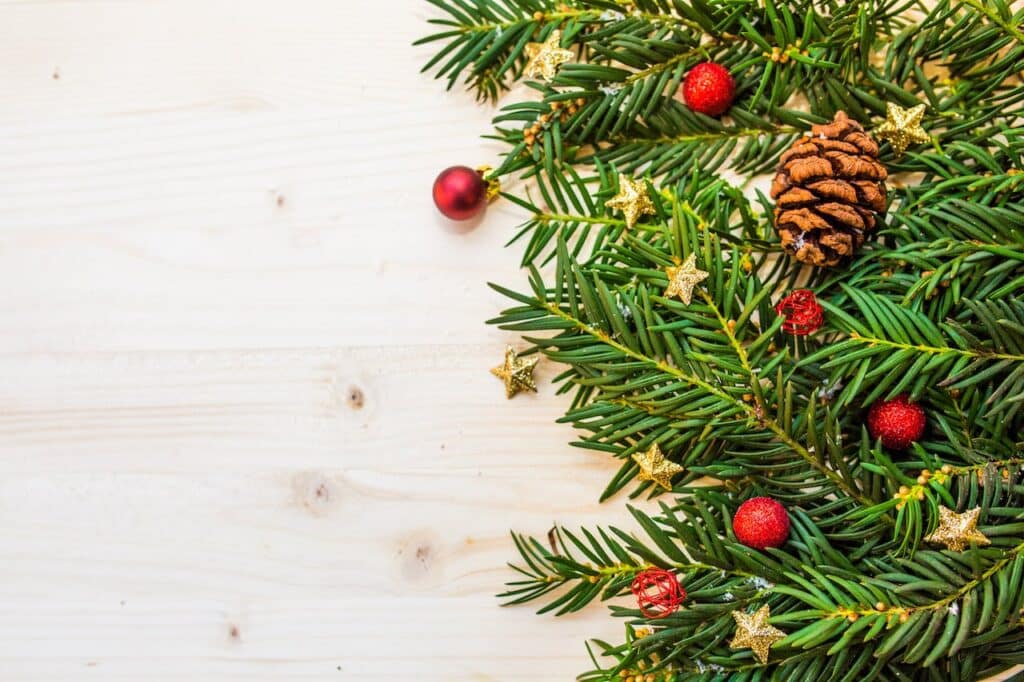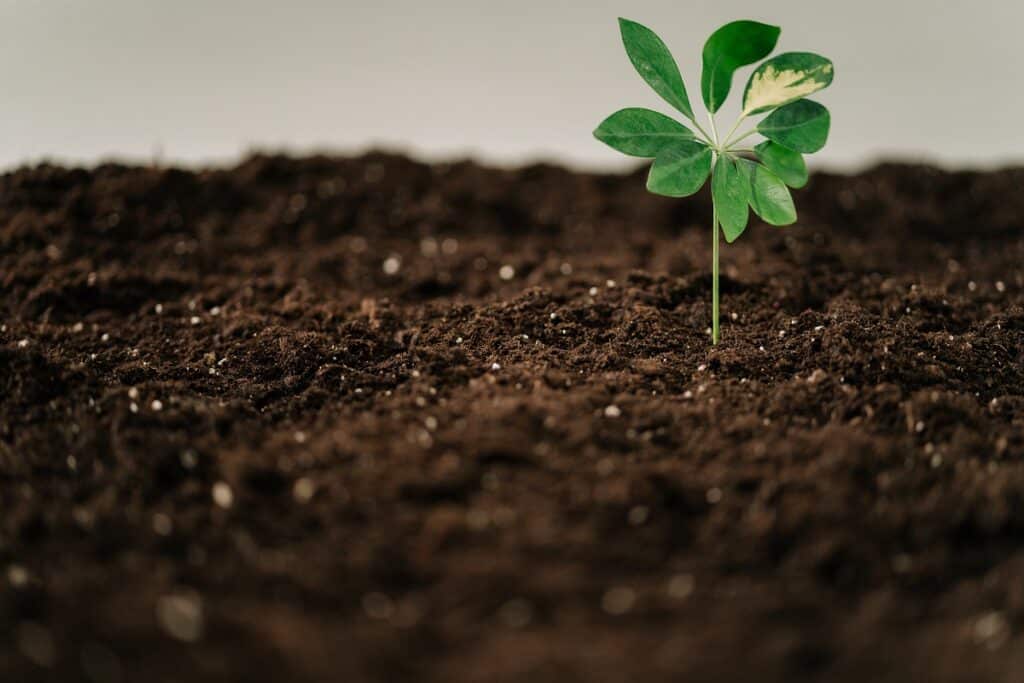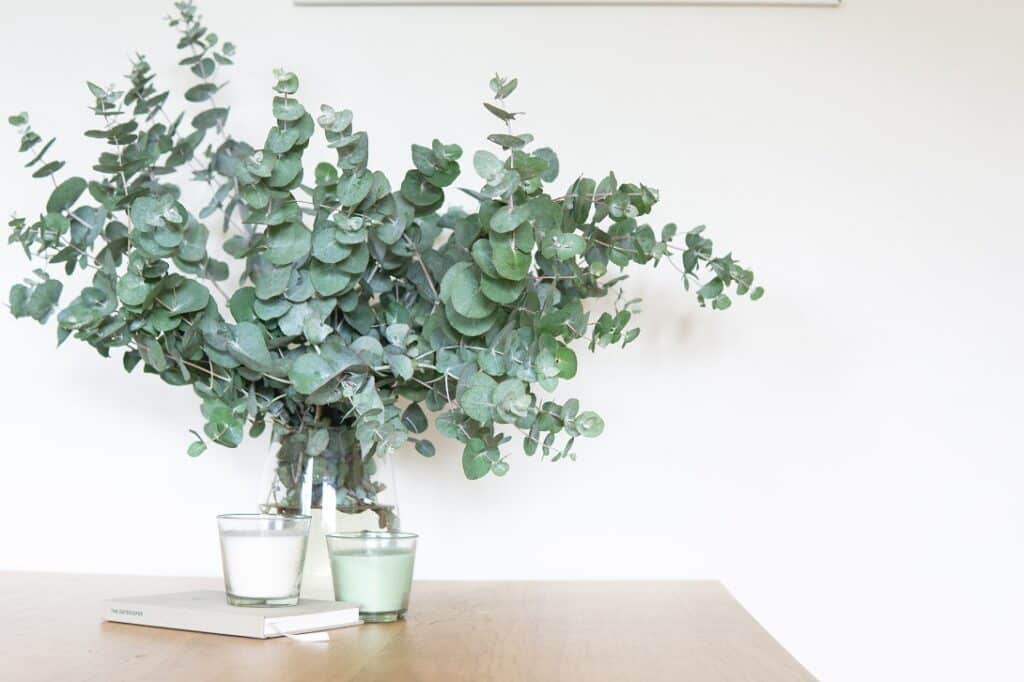Prepare your indoor plants for winter with expert tips. From proper watering to optimizing lighting, learn strategies to keep them thriving in the colder months. Create a green oasis in your home with our practical advice for winter care.

Understanding Indoor Plants’ Winter Needs
Recognizing the dormancy period for different plants
During the winter months, many indoor plants enter a dormancy period. This is a natural phase where the plants slow down their growth and conserve energy. It is essential to recognize if your plants are entering dormancy, as their care requirements will change during this time.
Different types of plants have varying dormancy periods. Some plants may go fully dormant, shedding leaves and reducing their water and light requirements, while others may have a partial dormancy where their growth slows down but they still require some care.
Adjustments needed for winter maintenance
As the temperatures drop and the amount of daylight decreases, certain adjustments are needed for the maintenance of indoor plants. It is important to provide the right temperature, lighting, watering, and humidity levels to ensure the health and well-being of your plants during the winter months.
By understanding and making these adjustments, you can help your indoor plants successfully navigate through the challenges of winter and ensure their growth and vitality.
Challenges indoor plants face during winter
Indoor plants face several challenges during the winter season. The decrease in daylight hours can affect their growth and development. Indoor heating reduces humidity, leaving plants prone to pests and diseases. Temperature changes and poor air circulation further challenge indoor plants’ winter health.
To overcome these challenges, providing the necessary care and adjustments is essential to create an optimal environment for your plants’ well-being.
Importance of Correct Temperature
Ideal indoor winter temperature for plants
Maintaining the correct temperature is crucial for the health and survival of indoor plants during winter. Most houseplants thrive in temperatures between 60-75 degrees Fahrenheit during the day and slightly cooler temperatures at night. However, it is essential to consider the specific temperature preferences of each plant species.
Certain tropical plants prefer higher temperatures, while succulents can tolerate cooler ones. Researching and understanding your plants’ temperature requirements is crucial to provide optimal conditions for their winter growth.
Effects of drastic temperature changes
Drastic temperature changes can have detrimental effects on indoor plants. Rapid fluctuations in temperature can stress the plants and lead to leaf drop, wilting, and even plant death. It is crucial to avoid placing your plants near drafty windows or doors where temperature changes are more likely to occur.
Ensure indoor plants’ well-being in winter with a stable temperature. Use insulation, seal doors and windows, and opt for heating systems offering gentle, consistent warmth to prevent temperature fluctuations.
Ensuring heat sources don’t damage plants
In winter, protect indoor plants from drying out and stress by avoiding direct exposure to heat vents or radiators. Use barriers like curtains or shelves for regulated warmth.
Additionally, avoid placing plants too close to space heaters or fireplaces, as sudden temperature increases can shock the plants. By maintaining a safe distance and ensuring proper airflow around your plants, you can protect them from potential heat damage.

Optimal Lighting for Indoor Plants
Effects of reduced daylight hours
As the winter season brings shorter days and reduced natural daylight, it is important to consider the effects of reduced daylight hours on indoor plants. Light plays a critical role in the process of photosynthesis, which is essential for plant growth and development. Without sufficient light, plants may become weak, leggy, and lackluster.
Reduced daylight hours can also disrupt the plants’ internal biological clock, leading to irregular growth patterns and hindered flowering. Therefore, it is crucial to provide adequate lighting for your indoor plants during the winter months to compensate for the lack of natural sunlight.
Alternative lighting solutions
To ensure optimal lighting for indoor plants during winter, you can supplement natural light with artificial lighting. LED grow lights are a popular choice for indoor gardening as they provide the specific light spectrum necessary for plant growth. These lights emit both red and blue wavelengths, which are crucial for photosynthesis.
Position the grow lights above your plants at a distance suitable for the intensity of light required by your specific plants. It is recommended to follow the manufacturer’s instructions for the recommended distance and duration of light exposure.
Recommended hours of light per day
While the duration of light exposure may vary depending on the type of plant, a general guideline is to provide 10-14 hours of light per day for indoor plants during winter. This prolonged exposure to light helps compensate for the reduced natural sunlight and provides the necessary energy for the plants to carry out their biological processes.
It is important to establish a consistent lighting schedule for your plants, ensuring they receive the recommended hours of light each day. This will help maintain their growth, health, and overall well-being throughout the winter season.
Proper Watering Techniques
Changes in watering routine for winter
Winter brings lower temperatures and reduced light, directly affecting indoor plants’ water requirements. During this season, plants generally require less water compared to warmer months when they experience higher evaporation rates.
To adjust your watering routine for winter, it is necessary to monitor the soil’s moisture levels before each watering. Stick your finger or a moisture meter about an inch into the soil to check if it feels dry. If the soil feels moist, it is better to hold off on watering and allow the plant to dry out slightly. Overwatering during winter can lead to root rot and other water-related issues.
Signs of overwatering and underwatering
Overwatering and underwatering can both be detrimental to the health of your indoor plants during winter. Knowing the signs of these conditions can help you adjust your watering routine accordingly.
Signs of overwatering include yellowing or browning of leaves, wilting, and a damp or musty smell coming from the soil. On the other hand, signs of underwatering include drooping leaves, dry and brittle soil, and a general appearance of dehydration in the plant.
By closely monitoring your plants and adjusting your watering routine based on their specific needs, you can prevent the negative effects of overwatering or underwatering.
Water temperature considerations
While it is crucial to water your indoor plants appropriately during winter, it is also important to consider the temperature of the water you use. Cold tap water can shock the plants’ roots and hinder their ability to absorb nutrients. Therefore, it is recommended to use room temperature water for watering your plants.
Allowing the water to sit for a while before use can help reduce the chill and ensure that it is at a suitable temperature for your plants. By providing your plants with warm water, you can promote healthy root development and overall growth even during the colder months.

Maintaining Humidity Levels
Why humidity is crucial for indoor plants
Humidity plays a vital role in the health and well-being of indoor plants, especially during winter when moisture levels tend to be lower. Many indoor plants originate from tropical and subtropical regions where high humidity is prevalent. Replicating these conditions indoors is essential to ensure the plants thrive.
Proper humidity levels help prevent the drying out of plant leaves, reduce the risk of pests and diseases, and promote optimal plant growth. When the air becomes too dry, plants can suffer from leaf browning, leaf drop, and increased susceptibility to pests such as spider mites.
Tips for increasing humidity indoors
To increase humidity levels indoors for your plants during winter, you can employ several simple techniques. One effective method is to use a humidifier, which adds moisture to the air in a controlled manner. Place the humidifier near your plants, ensuring that it is not directly blowing on them.
Alternatively, you can create a DIY humidity tray by placing a shallow tray filled with water and pebbles beneath your potted plants. As the water evaporates, it increases the humidity around the plants. Be cautious not to let the plants’ roots sit in water, as this can lead to root rot.
Grouping plants together is another way to increase humidity levels. As plants transpire, they release moisture into the air, creating a microclimate of higher humidity.
Signs your plants may need more humidity
If your indoor plants are lacking sufficient humidity, they may exhibit certain signs. Look for curling or browning leaf edges, wilting despite adequate watering, and an overall lack of vigor in the plant. These signs indicate that the air around the plants is too dry, and they would benefit from increased humidity.
By recognizing these signs and taking measures to increase humidity, you can prevent moisture-related issues and promote healthier growth for your indoor plants during winter.
Consideration of Dormant Period
Identifying if your plant is dormant
It is important to identify if your indoor plants are entering a dormant period during winter to adjust your care routine accordingly. Signs of dormancy may include decreased growth, yellowing or dropping of leaves, and a general slowdown in the plant’s overall activity. However, it is essential to note that not all plants go fully dormant during winter.
Some plants, such as succulents, may continue to grow actively even during the colder months. Therefore, it is crucial to research and understand the specific dormancy patterns of your individual plants to provide the appropriate care.
Caring for plants during dormancy
When your indoor plants enter a dormant period, their care requirements will change. During this time, it is important to reduce watering frequency and adjust the amount of light and fertilizer they receive. Dormant plants require less water, as their growth and metabolic rate have significantly slowed down.
Avoid fertilizing dormant plants, as they do not require as many nutrients during this phase. However, continue to provide them with adequate lighting, as some plants may still need a certain amount of light to support their dormant processes.
Avoiding overcare during this period
While it may be tempting to provide extra care and attention to your indoor plants during their dormant period, it is important to avoid overcare. Overwatering or over-fertilizing dormant plants can lead to stress and potential damage.
By understanding the dormancy requirements of your plants and providing the necessary adjustments, you can ensure they receive the appropriate care without creating undue stress during their natural resting phase.
Proper Feeding and Fertilization
Adjusting your fertilization routine for winter
Feeding and fertilizing your indoor plants correctly during winter is crucial for maintaining their health and well-being. However, it is necessary to adjust your fertilization routine to meet the specific needs of your plants during this season.
As mentioned earlier, many plants enter a dormancy period during winter, reducing their need for nutrients. Therefore, it is recommended to decrease the frequency of fertilization and use a diluted fertilizer solution to avoid overfeeding the plants. Follow the instructions on the fertilizer packaging to ensure you are providing the appropriate amount for your plants’ requirements.
Best types of fertilizer for indoor plants in winter
Choosing the right type of fertilizer for your indoor plants during winter is important for their overall health. Look for fertilizers specifically formulated for houseplants, as they provide the necessary balance of essential nutrients.
Organic fertilizers, such as compost tea or worm castings, can be beneficial during winter, as they release nutrients slowly and prevent the risk of over-fertilization. These natural fertilizers also improve the soil structure and promote beneficial microbial activity, enhancing the overall health of your plants.
Signs of nutrient deficiency in plants
During winter, it is important to monitor your indoor plants for signs of nutrient deficiency. Common signs include yellowing or pale leaves, stunted growth, and overall poor plant vigor.
If your plants are exhibiting these signs, it may indicate a lack of essential nutrients. By adjusting your fertilization routine and providing appropriate nutrients, you can help your indoor plants overcome nutrient deficiencies and thrive during the winter season.
Ensuring Adequate Air Circulation
Importance of air flow for preventing pests and disease
Proper air circulation is crucial for the health of indoor plants, especially during the winter season. Adequate airflow helps prevent the buildup of excess moisture, which can lead to the growth of mold, mildew, and other plant diseases. It also discourages the proliferation of pests, as stagnant air can create an ideal environment for them to thrive.
By ensuring adequate air circulation, you promote the overall well-being of your indoor plants, reducing the risk of fungal infections, moisture-related issues, and pest infestations.
Ideal room locations for effective air circulation
To ensure effective air circulation for your indoor plants, it is important to consider the placement of your plants within the room. Avoid positioning plants too close to walls or other obstructions that may impede airflow. Instead, place them in open areas where air can freely circulate around them.
Strategic placement near windows or near fans can help facilitate air movement within the room. However, be cautious not to expose the plants directly to cold drafts or strong winds, as this can cause stress and damage to the plants.
Warning signs of poor air circulation
To identify if your indoor plants are experiencing poor air circulation, watch out for certain warning signs. These include an accumulation of dust on the leaves, a sticky residue on the plant’s surface, or the presence of pests such as spider mites or aphids.
If you notice any of these signs, it may indicate insufficient air circulation. Take measures to improve airflow around your plants by adjusting their placement or using fans to enhance movement. Regularly dusting the leaves can also remove any potential obstructions and promote better air exchange.
Seasonal Repotting and Pruning
The right time to prune and repot
Pruning and repotting are essential gardening techniques that can be beneficial for indoor plants during winter. However, it is important to determine the right time for these activities to maximize the plants’ health.
Late winter or early spring is generally the best time to prune and repot most indoor plants. Pruning during this time allows the plants to focus their energy on new growth once the growing season begins. Repotting in early spring provides the plants with fresh soil and encourages healthy root development.
How to prune your indoor plants properly
Proper pruning techniques are essential for the optimal growth and appearance of your indoor plants. When pruning, ensure you use clean and sharp pruning tools to avoid damaging the plant. Remove any dead, damaged, or diseased foliage or branches, cutting just above a leaf node or stem junction.
If you wish to shape your plants, such as creating a bushier form or maintaining a certain height, selectively prune the desired areas. Avoid excessive pruning, as it can lead to stress and hinder the plants’ overall health.
Signs that your plant needs repotting
Observing the condition of your indoor plants’ roots can help determine if they require repotting. If you notice roots protruding from drainage holes or densely circling around the root ball, it may indicate that the plant has outgrown its current pot.
Additionally, if you observe slow growth, poor drainage, or water pooling on the soil surface, repotting may be necessary to improve the plant’s overall health. Choose a pot that is slightly larger to allow for future growth and use well-draining potting soil suitable for your specific plant species.
Preventing and Treating Common Winter Pests
Common indoor plant pests during winter
Winter brings its own set of pests that can affect the health of your indoor plants. Common pests during this season include spider mites, aphids, mealybugs, and fungus gnats. These pests can thrive in indoor environments due to the lack of natural predators and the favorable conditions provided by heating systems.
By remaining vigilant and regularly inspecting your plants, you can identify pest infestations early on and take appropriate measures to prevent further damage.
Natural remedies for pest control
Treating and preventing pest infestations during winter can be done using natural remedies that are safe for both your plants and the environment. For instance, you can use soap-based sprays, such as a diluted mixture of water and mild dish soap, to control aphids and spider mites. These sprays suffocate the pests and disrupt their life cycle.
For fungus gnats, which thrive in moist soil, allowing the soil to dry out between waterings can help reduce their population. Additionally, introducing beneficial insects, such as ladybugs or predatory mites, can provide natural pest control.
When to seek professional help for pest problems
While natural remedies can be effective in controlling indoor plant pests during winter, there may be instances where professional help is necessary. If the pest infestation becomes severe or if you are unsure about the identification and treatment of the pests, it is recommended to seek assistance from a professional.
Professional pest control services can provide targeted treatments and help alleviate the pest problem without causing harm to your plants or the surrounding environment. They have the expertise to handle various types of infestations and can offer customized solutions to protect the health and well-being of your indoor plants.
By understanding the potential pests, employing natural remedies, and seeking professional help, you can effectively prevent and treat common winter pests, ensuring your indoor plants remain healthy and thriving.
In conclusion, understanding the winter needs of indoor plants is crucial for maintaining their health and well-being during the colder months. By recognizing the dormancy period for different plants, making adjustments for temperature, providing optimal lighting, implementing proper watering techniques, maintaining humidity levels, considering dormancy, feeding and fertilizing correctly, ensuring adequate air circulation, practicing seasonal repotting and pruning, and preventing and treating common winter pests, you can provide the necessary care to keep your indoor plants healthy throughout the winter season. By following these tips and guidelines, you can enjoy the beauty and benefits of thriving indoor plants all year round.




